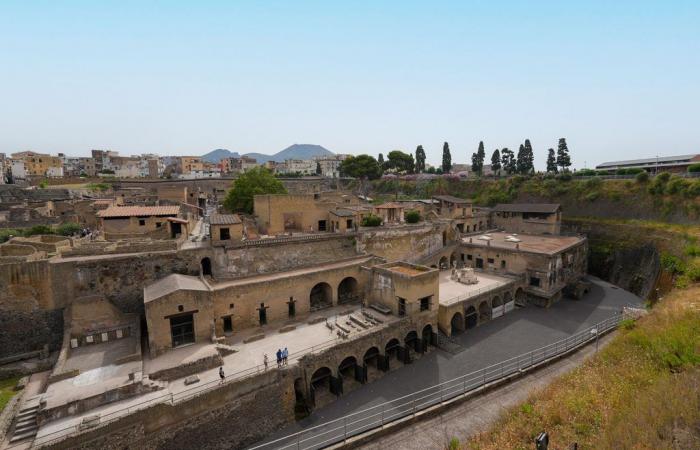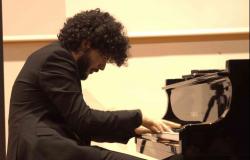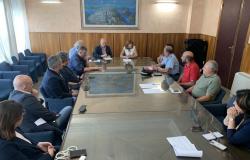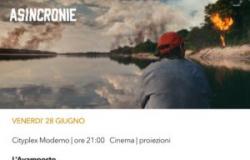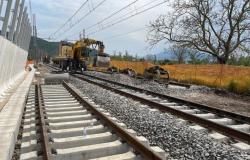The beach of ancient Herculaneum, the only seafront of a Roman city almost entirely preserved, has opened to the public. Today the sea is just over a kilometer away from the excavation area but, thanks to this project, visitors will be able to have an image as close as possible to what the coastline looked like at the time of the catastrophic eruption of 79 AD, which destroyed Pompeii, Stabia and Oplontis, as well as Herculaneum itself.
The project in collaboration with the Packard Humanities Institute
The reorganization of this area comes at the conclusion of a multi-year process of multidisciplinary research, archaeological excavation, restoration, engineering and architecture activities, in the wake of a project donated by the Packard Humanities Institute as part of the public-private partnership called Herculaneum Conservation Project. The new structure of the entire area of the ancient beach was financed within the CIS Vesuvio Pompeii Naples, for an amount of approximately 3 and a half million euros, coordinated and managed by the Greater Pompeii Unit, which will also lead to the reunification of the main archaeological area with the Villa dei Papiri.
In recent decades, this area has been progressively affected by corrosion and decay phenomena, due to natural factors linked to the conveyance of rainwater and rising water, which had transformed the beach into a sort of marsh, with related dangers for the heritage. To restore the beach to its safety and usability, a walkable area was created on the sea front of the ancient city, giving it a completely renewed perception.
«The ancient beach is an extraordinary and unique place in the world», declared Francesco Sirano, director of the Archaeological Park of Herculaneum. «To conserve it we have reduced the risk of continuous flooding and the dangers for the stability of the excavation fronts and the sea front of the ancient city, reviewing it today like the ancient Romans. Let’s restore the landscape of 79 AD and let everyone walk on the beach again”, continued Sirano, also recalling the sacredness of the place, “Where archaeological research has highlighted evidence that more than 300 desperate people tried in vain to be saved thanks to a real civil protection operation directed by the admiral and illustrious Roman scholar Pliny the Elder”.
The ancient beach of Herculaneum
Recent investigations have shown that the coastline has changed its level several times over the centuries, rising and falling since at least the 3rd century BC. Phenomena linked to volcanism, together with the action of the waves, deposited the sands that progressively created the Roman beach of 79 AD. The ancient beach was therefore composed of black volcanic sand from which, in some points, the tufaceous platform emerged below. It had a slight inclination towards the sea, the shoreline of which must have been approximately where the excavation area ends today. Not only were seafaring activities carried out on the beach, but it was also used to reach the city and to go up via ramps towards the houses directly overlooking the sea and to supply the suburban spas with wood.
On the night of the eruption in 79 AD, in addition to more than 300 fugitives, there were also animals on the beach including mules and horses. The fugitives were surprised in the middle of the night by the arrival of the first fiery cloud which, with a temperature of over 400° and a speed of 80 km/h, reached the city and caused the instant death, due to thermal shock, of all the inhabitants. The arrival of waves of volcanic mud from Vesuvius then covered the remains of their bodies, sealing them in the position they were in at the time of death. From the study of these skeletons, important biological data have been obtained on the diet and diseases of the ancient Herculaneum inhabitants. The fugitives had brought with them precious objects, such as hoards of coins and jewels, but also lamps to provide light in the thick darkness caused by the eruption and house keys, a sign that they had had time to close the doors before fleeing.
At the end of 2021, the ancient beach returned the skeleton of the last fugitive from Herculaneum, a man of around 40/45 years of age. He was probably on the seashore or in the areas of the city above, dragged by the force of the eruption together with his belongings, preserved in a fabric bag. The laboratory excavation of the earthen block which enclosed the bag highlighted that inside it contained a wooden coin holder with a compartment inside which there were some rings, and some wooden writing tablets, the contents of which will be clarified to us by the continuation of the micro excavation.
On the ancient beach, in addition to the skeleton, many wooden finds were found dragged by the pyroclastic flow. Shrubs, roots of tall trees, large beams, fragments of frames and panels probably belonging to false ceilings and building roofs, as well as wooden planks, struts and other elements perhaps from boats. All this makes the Herculaneum excavations unique in the world.

